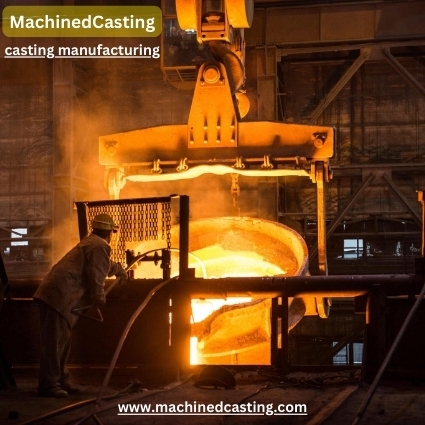Casting manufacturing is a cornerstone of industrial production, enabling the creation of intricate and durable metal parts essential across numerous industries, from automotive to aerospace, and beyond. Whether you're a seasoned professional or a newcomer to the field, mastering the art of casting manufacturing requires a deep understanding of materials, processes, and cutting-edge techniques. In this guide, we'll delve into the fundamentals of casting manufacturing, explore advanced methodologies, and uncover strategies for enhancing precision, efficiency, and innovation.
-
Understanding Casting Processes:
- Sand Casting: One of the oldest and most widely used casting methods, sand casting involves creating molds from sand mixed with a binding agent. It's suitable for both ferrous and non-ferrous metals and allows for the production of complex shapes.
- Investment Casting: Also known as lost-wax casting, this process involves creating a wax pattern, coating it with a ceramic shell, burning out the wax, and pouring molten metal into the cavity. Investment casting offers excellent surface finish and dimensional accuracy, making it ideal for intricate parts.
- Die Casting: Die casting utilizes reusable metal molds, or dies, to produce high-volume parts with tight tolerances. It's commonly used for manufacturing components in the automotive, electronics, and appliance industries.
- Continuous Casting: Primarily used for producing metal sheets, strips, and rods, continuous casting involves pouring molten metal into a water-cooled mold, which continuously extracts the solidifying metal in the desired shape.
- Centrifugal Casting: In this method, molten metal is poured into a rotating mold, resulting in cylindrical or symmetrical parts with superior mechanical properties due to the absence of porosity.
-
Material Selection and Design Considerations:
- Material Properties: Different casting processes are compatible with specific materials, such as aluminum, steel, iron, and alloys. Understanding the properties of these materials is crucial for achieving desired mechanical, thermal, and chemical characteristics in the final product.
- Design for Manufacturability: Designing parts optimized for the casting process is essential for minimizing defects, reducing costs, and enhancing performance. Considerations such as draft angles, fillets, and gating systems can significantly impact the success of casting operations.
-
Advanced Techniques and Technologies:
- Computer-Aided Engineering (CAE): Utilizing simulation software allows engineers to predict and optimize casting processes, including mold filling, solidification, and cooling. CAE enables the identification of potential defects and the refinement of designs before physical prototyping, saving time and resources.
- Additive Manufacturing: Additive manufacturing, or 3D printing, complements traditional casting methods by enabling the rapid production of complex patterns and molds. Integrating additive manufacturing into the casting workflow enhances flexibility, customization, and speed to market.
- Automation and Robotics: Implementing automation and robotics in casting facilities improves productivity, repeatability, and safety. Automated systems can handle tasks such as mold handling, pouring, and finishing, allowing operators to focus on process optimization and quality control.
-
Quality Control and Continuous Improvement:
- Non-Destructive Testing (NDT): Utilizing techniques such as X-ray inspection, ultrasound, and magnetic particle testing ensures the integrity of cast components without damaging them. NDT methods detect defects such as porosity, cracks, and inclusions, enabling corrective actions before parts reach the customer.
- Lean Manufacturing Principles: Applying lean principles such as value stream mapping, 5S, and Kaizen fosters a culture of continuous improvement in casting operations. By eliminating waste, optimizing workflows, and empowering employees, organizations can enhance efficiency, quality, and customer satisfaction.
Conclusion: Mastering the art of casting manufacturing requires a blend of traditional craftsmanship, technological innovation, and relentless pursuit of excellence. By understanding casting processes, optimizing material selection and design, embracing advanced techniques and technologies, and prioritizing quality control and continuous improvement, manufacturers can unlock new levels of precision, efficiency, and innovation in their operations. As industries evolve and demands shift, those who embrace these principles will remain at the forefront of casting manufacturing, shaping the future of production.




